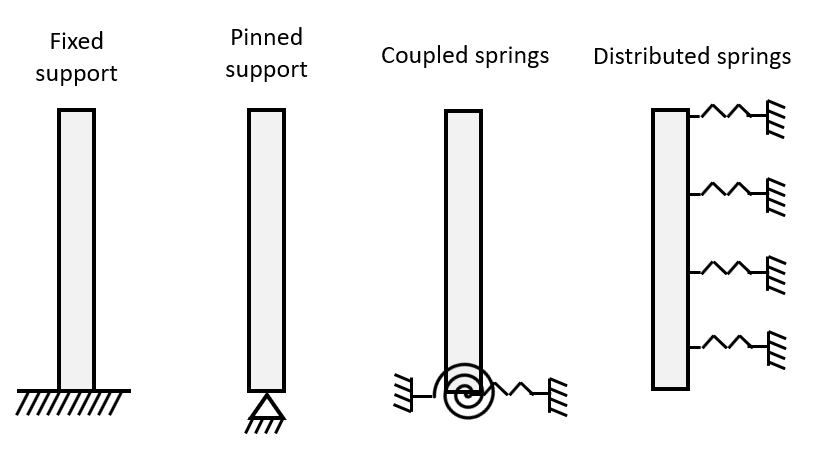Geotechnical modeling
There are several ways to model the soil-structure interaction with Ashes. The simplest (such as
fixed structures
or
linear springs
) ways can be modeled from templates, while more complex models (such as the
PISA
model or
hysteretic damping
) can be modeled by importing a support structure. It is also possible to model damping with
dashpots.
The section
Support section files
explains how to add springs and dashpots to imported structures.
Note
: in Ashes, springs are modeled as
S
upports
. Supports can be applied at any node of the support structure (not necessarily under the seabed). Similarly, dashpots can be added to any node. Even though it is common to use those to model the soil-structure interaction, it is also possible to use them to model any other effect where springs or dashpots might be required.
An overview of simple geotechnical models is given in
Jonkman et al. (2010k)
. The figure below shows some of the simple models that can be modeled in Ashes.

Note:
for imported substructures, all springs (rotational and translational) can be made nonlinear. Any combination between constrained supports, translational and rotational, linear and nonlinear springs can be modeled.
The following sections give more information about how geotechnical loads are modeled in Ashes.
2.5.1 Soil stiffness
2.5.2 Linear springs
2.5.3 Damping - dashpots
2.5.4 Nonlinear springs
2.5.5 Hysteresis